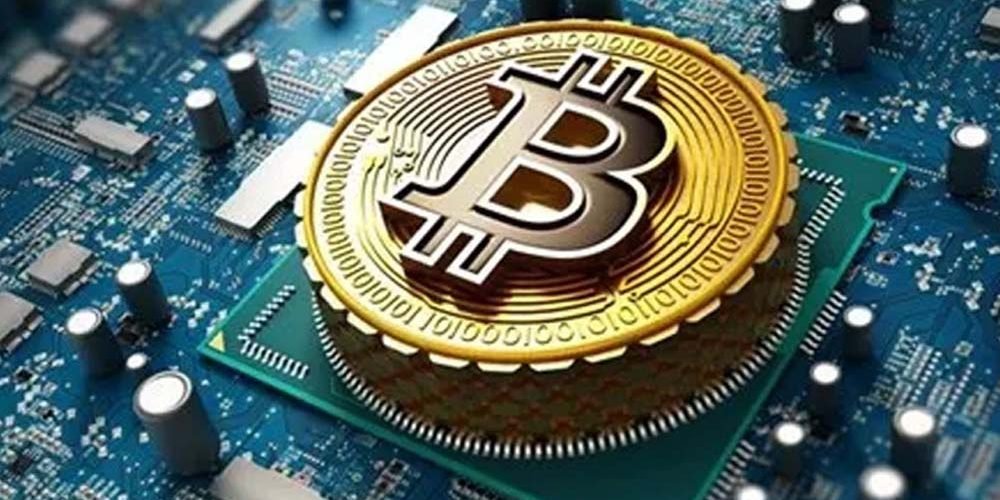Many people have heard of Bitcoin, but not everyone understands it. Some people believe that Bitcoin is a scam and others think it’s the future of finance. What most people don’t know is that Bitcoin can be “mined”—that is, you can buy or build specialized computers to find new Bitcoins on the internet.
Mining for coins takes an enormous amount of energy and effort, so many miners are turning to cloud-based services instead. Here’s everything you need to know about mining—how it works and what kind of hardware you need if you’d like to get started in this exciting new industry.
Table of Contents
What Is Bitcoin Mining?
Mining is the process of adding transaction records to Bitcoin’s public ledger of past transactions. This ledger of past transactions is called the block chain as it is a chain of blocks. The block chain serves to confirm transactions to the rest of the network as having taken place, making it impossible for anyone to modify once they have been recorded in this way.
As a reward for participating in this activity, cloud miner are awarded with new bitcoins and transaction fees paid by users sending transactions across the network (these fees are optional).
In order to mine bitcoins, you need to join a “mining pool.” A mining pool is a group of people who have banded together to combine their computing power and split the mined bitcoin between participants.
How Does Bitcoin Mining Work?
Bitcoin mining is a competitive process that involves solving a cryptographic puzzle to create new bitcoins. The cryptographic puzzles involved in bitcoin mining are extremely difficult to solve, but once one of them has been solved, it becomes much easier for the rest of the miners to verify and propagate that solution across the network.
The only way to create new bitcoins is by mining them (i.e., using your computer’s CPU power). This means that as more people mine bitcoin, they’re competing against each other in an increasingly difficult race to find those solutions first and claim new coins as their reward.
Why Mine Bitcoin?
Bitcoin mining is the process of adding transaction records to Bitcoin’s public ledger of past transactions (the blockchain). This activity is also known as “confirming” transactions. Miners are paid transaction fees as well as a subsidy of newly created coins, called block rewards. This both serves the purpose of disseminating new coins in a decentralized manner and incentivizes more people to mine.
Mining is intentionally designed to be resource-intensive and difficult so that the number of blocks found each day by miners remains steady over time, producing a controlled finite monetary supply. Individual blocks must contain a proof-of-work to be considered valid. This proof-of-work (PoW) is verified by other Bitcoin nodes each time they receive a block.
Bitcoin uses PoW for security reasons: to ensure that only someone who has enough resources can add new blocks onto the blockchain; this prevents malicious actors from overwriting historical transactions or spending money twice–a problem known as double spending or 51% attack.
What Do I Need to Mine Bitcoins?
You will need a computer and an internet connection. If you’re planning on mining Bitcoin, that computer needs to be powerful enough to handle the calculations required by the algorithm.
Processor (CPU)
Bitcoin uses the SHA-256 proof of work system. A good Bitcoin miner needs a powerful processor to run four to eight times faster than the fabled Ghash.io super-computer. Today, you need a processor that has at least 8 cores, or double that if you’re using your computer for something else while it mines. The best processors known to man are from Intel, though AMD is making a comeback with its new line of CPUs.
Mining Software
You start out with mining software on your computer, which will connect you to other computers known as nodes. These nodes create a network where your computer can communicate with the rest of the world. Once you get connected, the software will make it easier for you to read and receive any transactions happening within this network.
Reliable Internet
If something goes wrong with your connection, or if your computer crashes while you’re mining, you could potentially lose any bitcoins that were unconfirmed at that time. The only way to keep your bitcoins safe is by backing up your wallet file on a regular basis. This keeps all of your transactions stored in one place so that you don’t miss out on anything important when using bitcoin for purchases or transferring money between accounts.
Electricity and Mining Rig
You’ll first need a place to keep your hardware—mining rigs generate a lot of heat, so you’ll probably want an empty room that can accommodate it. You’ll also need to pay for the electricity to power your miners, which in turn requires special equipment and a separate bill to pay. Some people have built rigs using old coolers and space heaters, but this is risky and not recommended.
Bitcoin Wallet
Another thing you need is a wallet—a place where you can store your mined bitcoins. You also need a mining client, which connects directly to the bitcoin network and enables you to send and receive transactions.
Is Bitcoin Mining Profitable?
Bitcoin mining is profitable, but it depends on the cost of electricity and the cost of equipment. In countries where electricity is cheap and there’s a lot of excess power available, Bitcoin mining can be a lucrative business. If you’re considering starting a Bitcoin mining farm in your garage or basement, then it pays to know what factors affect profitability before making an investment decision.





